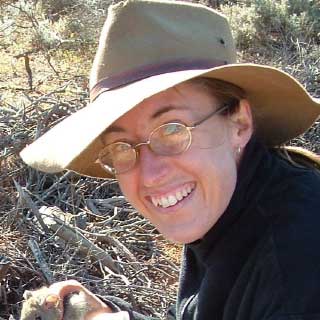Activity 5:
Consumers
Summary
Description
Students explore the next trophic level by looking at native small mammal populations inside and outside the reserve. They interpret raw data to show that small mammal populations are higher in AR and attribute this to the absence of foxes and cats. Students then look at the combined impact of rabbits and drought (as a chance environmental event) have on small mammals. They do this by modelling what would happen in a drought, using a series of parameters. As well as reinforcing concepts of complex interconnected ecosystem dynamics and the impact of chance environmental events, this activity introduces another important tool used by ecologists: ecological modelling.
VCE Biology (2016-2020)
Unit 1, Area of Study 2, Outcome 2, VCE Biology Study Design
VCE Key knowledge
Relationships between organisms within an ecosystem
- The distribution, density and size of a population of a particular species within an ecosystem and the impacts of factors including available resources, predation, competition, disease, chance environmental events, births, deaths and migration
Key science skills:
- Process quantitative data using appropriate mathematical relationships and units
- Organise, present and interpret data using schematic diagrams and flow charts, tables, bar charts, line graphs, ratios, percentages and calculations of mean
- Access secondary data, including data sourced through the internet that would otherwise be difficult to source as raw or primary data
- Draw conclusions consistent with evidence and relevant to the question under investigation
Student learning outcomes
On completion of this module, students will:
- Describe how ecologists work towards the conservation of species and ecosystems
- Describe how ecologists conduct a wide range of experiments to learn about the ecosystem
- Compare a wide range of biotic and abiotic factors and explain how they influence the size and distribution of the population of a particular species
Duration

Learning activities
Step 1
Students learn about transects that ecologists use to estimate numbers of small mammal populations by watching a short video, and then look at transect data from inside and outside AR. They look at evidence to consider why there is a difference and conclude that foxes predate on native mammals. The look at what happens when native mammals leave the fenced reserve through one-way gates (they all die). (State: births, deaths and migration impact a population)
Step 2
Students continue with their worksheet which now uses the data from step one as the baseline from which they model the impact on populations of native mammals inside and outside the reserve if there was a drought. They work through a series of parameters and with each step they use simple maths to model what happens to the populations. A short video explains why it is important that native consumers are not replaced by rabbits by explaining the important role of bettongs (state: chance environmental events impact a population)
Resources
Next activity: Activity 6
 Contemporary VCE Biology
Contemporary VCE Biology

